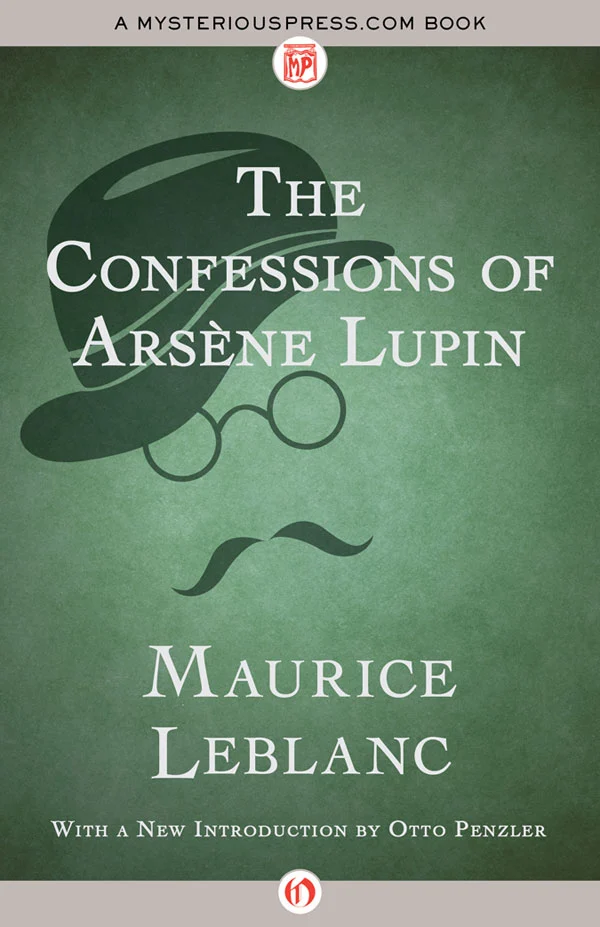The Confessions of Arsène Lupin

The Confessions of Arsène Lupin
Maurice Leblanc

BookishMall.com.COM

INTRODUCTION
Maurice Leblanc
IF MAURICE LEBLANC (1864–1941) had done nothing except create Arsène Lupin—the rogue who has been wildly popular in France for more than a century—his place in the pantheon of French literature would still have been assured.
Born in Rouen, he was educated in France; Berlin, Germany; and Manchester, England, and studied law before becoming a hack writer and police reporter for French periodicals. His sister Georgette—a famous actress and singer—was the mistress of Maurice Maeterlinck, the noted dramatist, and it is possible that this relationship influenced Leblanc’s work; some critics claim that his plays are his most polished literary productions.
In 1906 Leblanc’s previously undistinguished career skyrocketed when he was asked to write a short story for a new journal and produced the first Lupin adventure. His subsequent success and worldwide fame culminated in his induction into the French Legion of Honor.
Reading his fiction today, one is generally impressed with the fast pace and diversified action, although it borders on burlesque, and the incredible situations and coincidences may be a little difficult to accept.
Arsène Lupin
Unlike Fantômas, the other great criminal in French literature, Arsène Lupin is not violent or evil; his unlawful acts center on theft and clever cons rather than murder or anarchy.
A brilliant rogue, he pursues his career with carefree élan, mocking the law for the sheer joy of it rather than for purely personal gain. Young, handsome, brave, and quick-witted, he has a joie de vivre uniquely and recognizably French. His sense of humor and conceit make life difficult for the police, who attribute most of the major crimes in France to him and his gang of ruffians and urchins.
Like most French criminals and detectives, Lupin is a master of disguise. His skill is attested to by the fact that he once became Lenormand, chief of the Sûreté, and, for four years, conducted official investigations into his own activities. He employs numerous aliases, including Jim Barnett, Prince Renine, le Duc de Charmerace, Don Luis Perenna, and Ralph de Limezy; his myriad names, combined with his brilliant costumes, make it nearly impossible for the police to identify him (the reader of his exploits sometimes encounters a similar difficulty).
After a long criminal career of uninterrupted successes, Lupin begins to shift position and aids the police in their work—usually for his own purposes and without their knowledge. Toward the end of his career, he becomes a full-fledged detective, and although he is as successful in his endeavors as ever before, his heart does not seem to be in it.
The first book about him is Arsène Lupin, gentleman-cambrioleur (1907; US title: The Exploits of Arsène Lupin, 1907; reissued as The Extraordinary Adventures of Arsène Lupin, Gentleman-Burglar, 1910; British title: The Seven of Hearts, 1908). One of the stories, “Holmlock Shears Arrives Too Late,” is a parody of Sherlock Holmes. The second book in the series, and the worst, is Arsène Lupin contre Herlock Sholmes (1908; British title: The Fair-haired Lady, 1909; reissued as Arsène Lupin versus Holmlock Shears, 1909; reissued again as The Arrest of Arsène Lupin, 1911; US title: The Blonde Lady, 1910; reissued as Arsène Lupin versus Herlock Sholmes, 1910). Other short story collections about Lupin are The Confessions of Arsène Lupin (1912), The Eight Strokes of the Clock (1922), and Jim Barnett Intervenes (1928; US title: Arsène Lupin Intervenes). Among the best of the novels are 813 (1910), in which Lupin, accused of murder, heads the police investigation to clear himself by finding the true killer, and The Hollow Needle (1910), in which Lupin is shot by a beautiful girl and falls in love with her, vowing to give up his life of crime. Among the other Lupin novels are The Crystal Stopper (1913), The Teeth of the Tiger (1914), The Golden Triangle (1917), and The Memoirs of Arsène Lupin (1925; British title: The Candlesticks with Seven Branches).
Films
There are many early screen versions of Arsène Lupin’s basic conflicts with the Paris police, both in the United States, starting in 1917, and in Europe. The Teeth of the Tiger (Paramount, with David Powell) of 1919 is an old-dark-horse murder melodrama with sliding panels, secret passageways, and serial-like thrills. Wedgewood Nowell portrays Lupin in 813 (Robertson-Cole, 1920), in which Lupin impersonates a police officer to clear himself of a murder charge. There are several later European Lupins, notably French, in films even until the 1950s. The most important American Lupin films are given below.
Arsène Lupin. MGM, 1932. John Barrymore, Lionel Barrymore, Karen Morley, John Miljan. Directed by Jack Conway. Based on the play by Leblanc and Francis de Croisset. When the silk-hatted Lupin announces that he will steal a famous painting from the Louvre under the nose of the police, and does so, the chief of detectives uses a pretty lady crook to lure him into a trap.
Arsène Lupin Returns. MGM, 1938. Melvyn Douglas, Warren William, Virginia Bruce, Monty Woolley, E. E. Clive. Directed by George Fitzmaurice. The signature of Arsène Lupin, long thought dead, is scrawled across a safe from which a necklace has been stolen; the real Lupin, innocent and now living as a country gentleman, is as perplexed as the police are.
Enter Arsène Lupin. Universal, 1944. Charles Korvin, Ella Raines, J. Carrol Naish, Gale Sondergaard, Miles Mander. Directed by Ford Beebe. International thief Lupin, on a train from Istanbul to Paris, steals an emerald from a young heiress but returns it when he begins to suspect that the girl’s aunt and uncle plan to murder her.
I.
1 comment